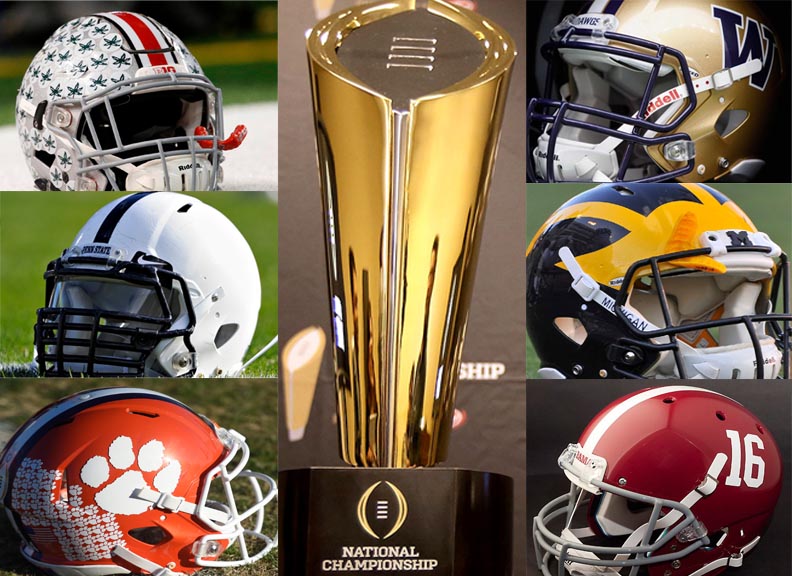Someone was going to get hurt and the only question that remained from opening week was which college football team was going to be left out this year.
Sorry, No. 5 Penn State.
The Nittany Lions had one of the best seasons in program history, but in the grand scheme of things, it didn’t amount to much as they were the latest snub in the College Football Playoff.
The four-team final College Football Playoff rankings were released on Sunday with Alabama taking the top spot followed by No. 2 Clemson, No. 3 Ohio State and No. 4 Washington rounding out the top 4.
The Nittany Lions, which beat conference opponent Ohio State earlier this year, won the Big Ten East Division and then closed out the regular season with a Big Ten title over then-No. 6 Wisconsin.
What a DIME! Trace McSorley and the Nittany Lions are putting on a show. #WeAre #B1GFCG https://t.co/vVWsx7fq0D
— FOX College Football (@CFBONFOX) December 4, 2016
So why did they not have the opportunity to play for a national championship?
Well, because that’s College football. A money driving popularity contest that seems to get more complicated with each passing year.
After Penn State was left out despite winning the conference title in what was arguably the toughest conference in the country this year, Big 12 commissioner Bob Bowlsby wanted some clarification.
“We just added a conference championship game (next year) for the sake of the playoff, but Ohio State didn’t even need to win its division,” he told reporters.
The Big 12 was told in 2014 that Conference Championships carried extra weight which is why No. 5 Baylor and No. 6 TCU were left out. That’s because the Big 12 didn’t have a conference championship game at that time, and because of that, TCU ended up slipping from third to sixth despite beating Iowa State 55-3.
“It’s clear that we were penalized for not having a postseason championship game,” Bowlsby told reporters in 2014. “It would have been nice to have been told that ahead of time because we made the impression that we had a different model, but it wasn’t one that was going to penalize us, and I think it’s clear that it did.”
Since the College Football Playoff was adopted three years ago, athletic directors, coaches and fans were looking for clues to fine tune their blue print on the best way to make the four-team playoff. Whether it was a strength of schedule, conference championships, tiebreakers or head-to-head results, the short answer is that there isn’t any clear guidelines as the committee has gone back and forth on its decisions.
And no matter what argument you make for a team to be included or excluded, the reality of it all is that championships should be determined on the field and not by a selection committee that picks and chooses who should be “worthy” to have the opportunity to play for a national championship.
And don’t get me started when people try and say the selection committee isn’t biased.
Remember former USC quarterback Pat Haden? The 57-year-old became USC’s athletic director in 2010 and was also a member on the College Football Playoff committee.
You might be asking yourself, why does it even matter.
Three words: Conflict of interest.
This rang true in 2014 when USC first-year head coach, Steve Sarkisian, got upset with a call against then No. 13 Stanford and asked Haden to come down to the sidelines to aid him in making his case to the officials. Haden did so, and then-No. 14 USC went on for a 13-10 victory. This of course caused quite the stir since he was also a member of the playoff selection committee at the time. Haden would later resign in 2015.
So with all the split national championships and controversy on who should get to play for the national title year in and year out, the only thing that’s really guaranteed in the system, is that somebody is going to be left out.
Follow Fan Insider on Facebook and on Twitter.
Agree or disagree with the article? Comment below or submit your article today.












